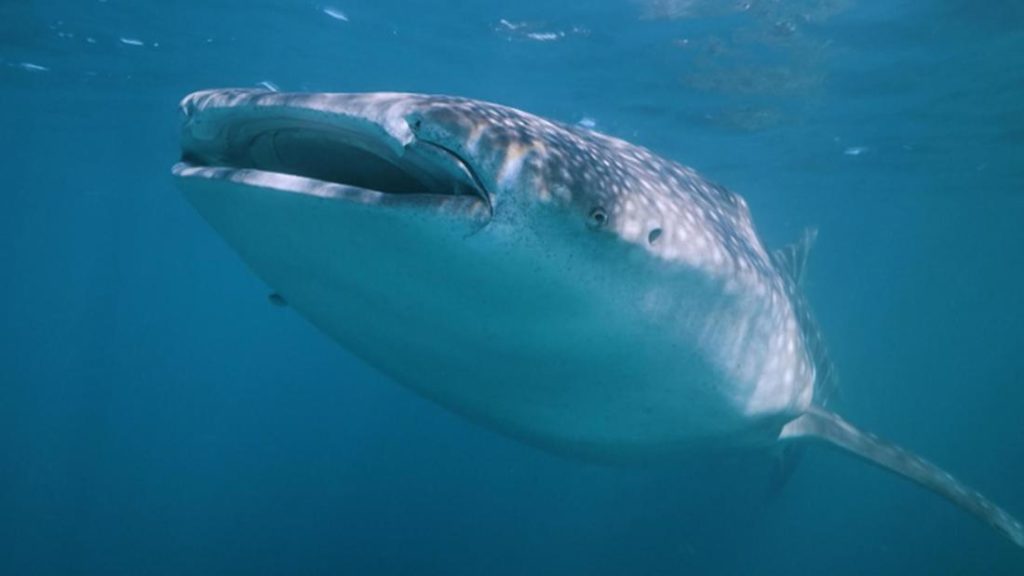Members of the public, scientists and whale shark tour operators around the world contribute photos of whale sharks to the system, which uses NASA technology to map their locations and track their movements. Today, the database holds over 70,000 submissions from more than 50 countries — making it one of the biggest crowd-sourced conservation projects in the world.
Despite their imposing size — whale sharks can grow up to 20 meters (65 feet) long — these gentle giants don’t pose a danger to swimmers. Feeding on plankton and tiny marine organisms, they cruise at a leisurely maximum of three miles per hour, allowing snorkelers and divers to get up close.
Norman has been studying these charismatic creatures for over 25 years. He first swam with a whale shark in the turquoise waters of Ningaloo reef on Western Australia’s northern coast. “It was one of the most amazing experiences I’ve ever had,” he recalls. “I’ll never forget it.”
Marine biologist Brad Norman photographing a whale shark.
A slow swimmer, Stumpy is relatively easy to keep up with, says Norman. “I see him nearly every year and … I think ‘G’day mate, how you goin’?”
Since that first encounter, Norman has swum with whale sharks on thousands of occasions — and says he still gets a buzz out of it every time.
Why NASA tech works for whale sharks
Whale sharks are identified by the markings on their skin.
Adapted from technology first developed for NASA’s Hubble Space Telescope program, the algorithm works for whale sharks because their skin markings form patterns similar to stars in the night sky.
Norman says that collectively, the data on whale shark locations and migration routes informs decisions on management strategies for habitat protection. “I can only be in one place one at one time,” he says. “It’s so important to have members of the public assisting with our project.”
Is swimming with whale sharks good for them?
Norman says he would “encourage anybody that gets the opportunity to swim with a whale shark.”
But more boats, snorkelers and divers in whale shark areas could be problematic. Norman cautions that impact on the sharks must be minimized.
However, regulation and enforcement are weaker in other places.
But where whale shark tourism is practiced responsibly, it can help save the species. Norman hopes to see more data collection around the world, plugging information gaps and strengthening conservation efforts. He’s seeking what he calls “the Holy Grail” — finding out where the whale sharks go to mate. Protecting their breeding grounds is the “one big thing” needed to save the species in the long run, he says. The help of thousands of citizen scientists gives him a better chance of making that possible.
You may also like
-
UK coronavirus variant has been reported in 86 countries, WHO says
-
California Twentynine Palms: Explosives are missing from the nation’s largest Marine Corps base and an investigation is underway
-
Trump unhappy with his impeachment attorney’s performance, sources say
-
Lunar New Year 2021: Ushering in the Year of the Ox
-
February 9, 2021 Trump impeachment trial news

